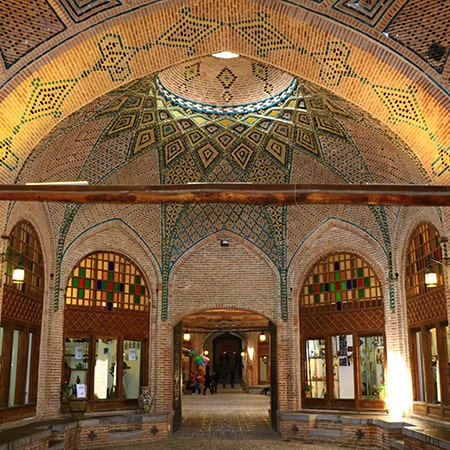Caravanserai of Sa’ad al-Saltaneh
In the period of the Nasir al-Din Shah Qajar, this Caravanserai was built by the order of the ((Saad al-Saltaneh)) Qajar ruler of Ghazvin. The most valuable part of this building is the four points that made up of a double junction and a tiled large dome is placed above it. Four sides of the dome contains four half dome with a drawing and lightning that shows more space.
Caravanserai of Sa’ad al-Saltaneh is the largest indoor caravanserai and domestic trading center of the country, with an area of more than 2.6 hectares, was built at the end of the reign of Nasir al-Din Shah Qajar.
Considering the size of this Caravanserai, it was one of the most important commercial centers in the Qajar era and the place of exchange of merchandise trades inside the country. The main entrance of this building is in Imam Khomeini Street of Ghazvin has a beautiful porch at the entrance of the building, which connects the street to the main courtyard. This valuable complex is ranked among the 38 selected buildings of the country’s cultural heritage.
